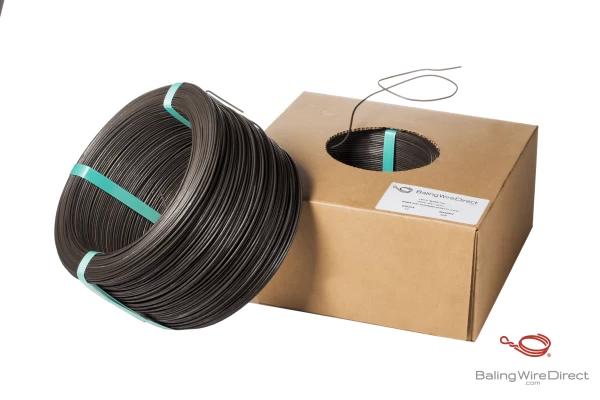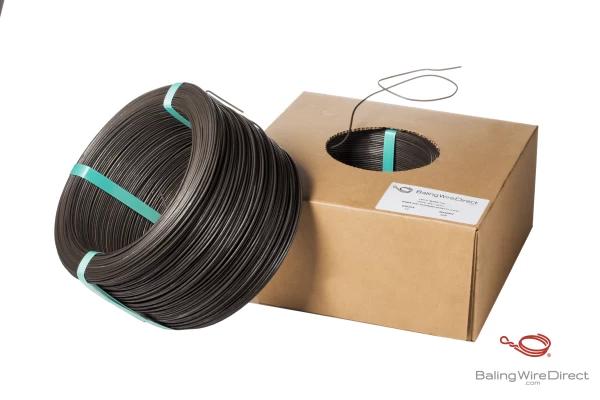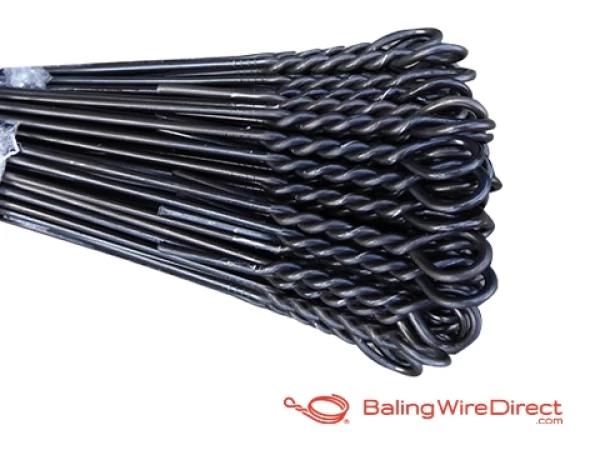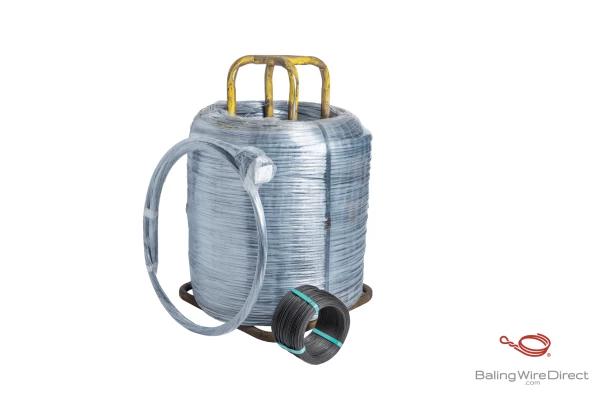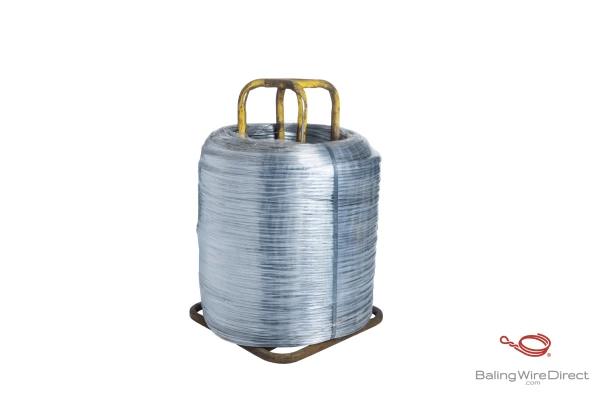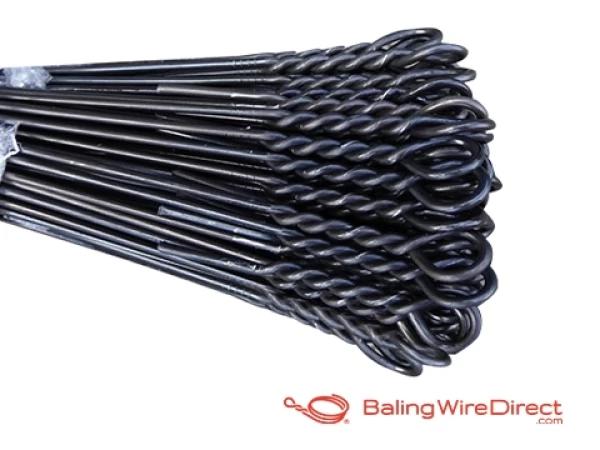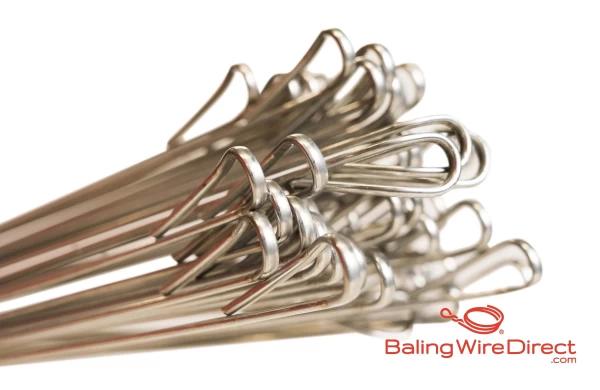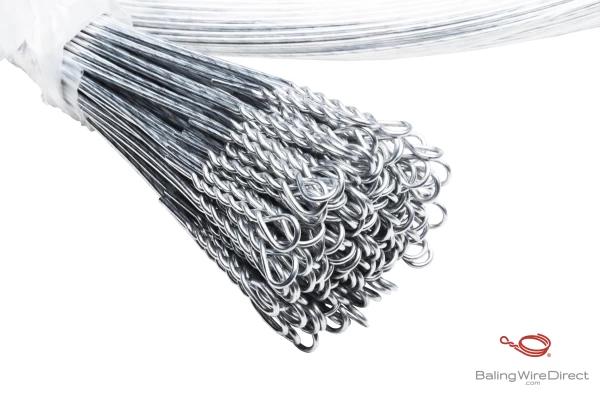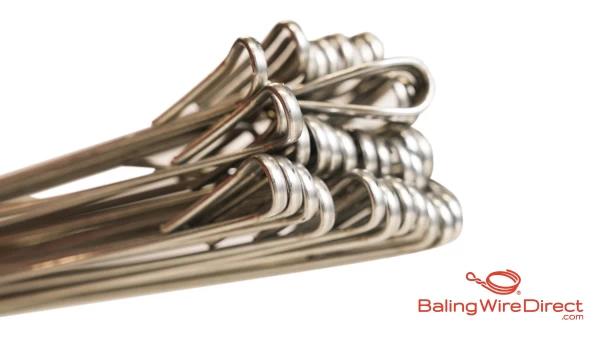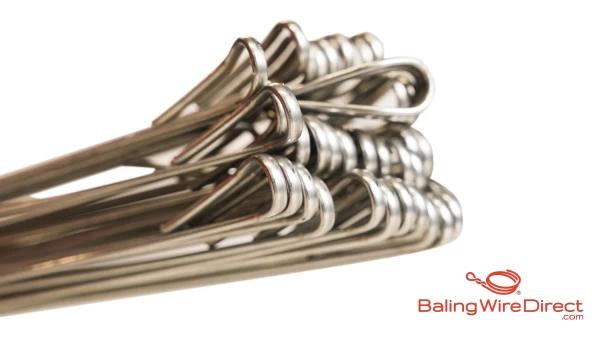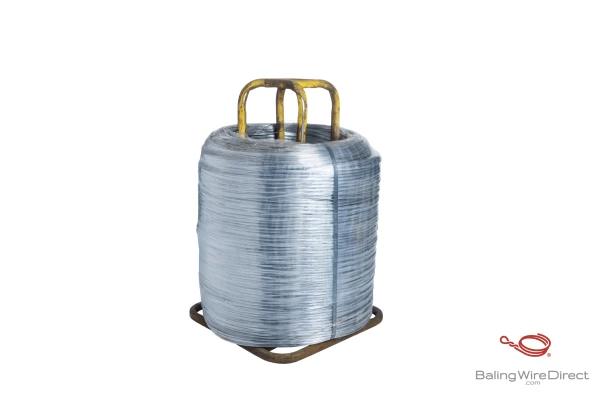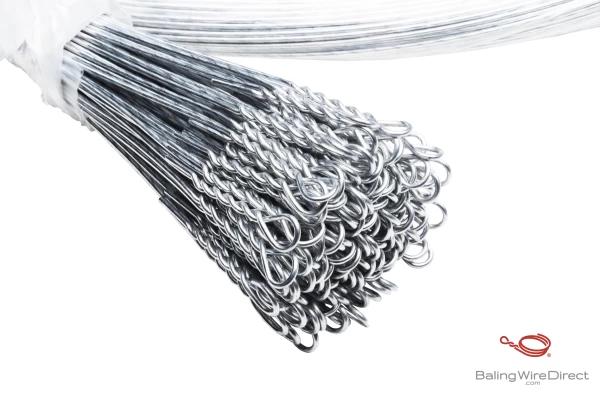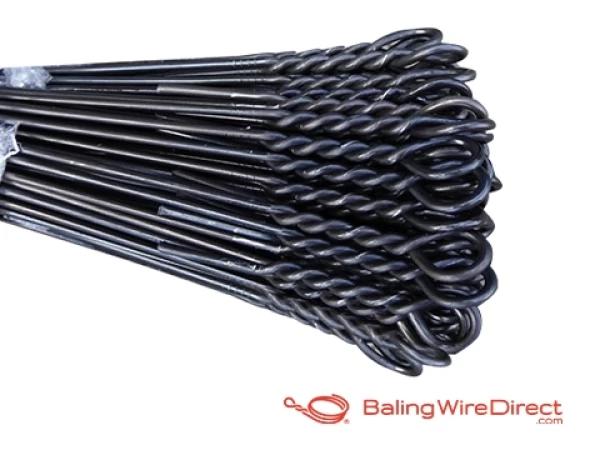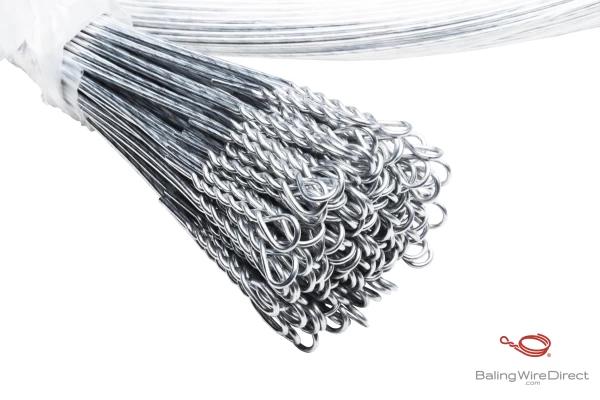Baling wire for recycling e-waste
According to Statista, the volume of electronic waste generated worldwide in 2019 was roughly 54 million metric tons. Baling Wire Direct is a trusted supplier of high-quality baling wire to the e-waste recycling industry.
Our partnership with e-waste recyclers
We provide high-quality baler wire and bale ties to secure recyclable electronic components into bales for storage and handling. Our products are made with US steel to provide quality products and support the domestic economy.
Our partnership extends beyond our products. We also promote the recycling of used baler wire. By reprocessing used wire, recycling companies can further their sustainability commitment, conserve resources, and reduce emissions.
What is e-waste?
E-waste refers to discarded electronic products, such as household appliances, IT equipment, and consumer electronics. The rapid expansion of technology has led to a significant increase in e-waste volumes.
Some examples of e-waste include:
- Cell phones.
- Computers.
- Laptops.
- Monitors.
- Printers.
These items are considered e-waste when they reach the end of their useful life and are discarded. E-waste contains valuable and hazardous materials, and its proper disposal is essential to minimize its impact on the environment and human health.
The future of the e-waste recycling market
The e-waste recycling market is poised for substantial growth, with a projected market size of $189.8 billion by 2030 and a compound annual growth rate of 14.4%. This significant expansion is being driven by increasing awareness of the adverse environmental impacts of improper e-waste disposal and the growing demand for sustainable products.
Efforts to address the challenges associated with the complex nature of electronic waste and the lack of proper recycling infrastructure are also contributing to this positive outlook. The development of new technologies for e-waste recycling and reuse is also expected to further fuel the market's growth.
The e-waste recycling process
The e-waste recycling process involves several key stages, each essential for the efficient and environmentally friendly management of electronic waste.
- The process begins with the collection of electronic products from sources, such as recycling bins, collection locations, or take-back programs.
- Once collected, the e-waste is sorted, dismantled, and shredded to prepare it for further processing.
- The e-waste then undergoes mechanical separation, where different material types are sorted out using technologies such as conveyor belts, magnets, eddy currents, and air jets.
- After the mechanical separation, the separated materials, such as iron, steel, aluminum, copper, circuit boards, and plastics, undergo further recovery processes to reclaim valuable components and minimize environmental impact.
- Recovered materials are then resold to electronics manufacturers to be used in new products.
The e-waste recycling process is a vital component of sustainable waste management and the circular economyy, enabling the recovery of valuable resources and the responsible disposal of hazardous materials.
The benefits of recycling e-waste
There are numerous benefits to recycling e-waste, including:
- Environmental protection. E-waste recycling prevents toxic chemicals and poisonous gases from spreading into the environment.
- Conservation of natural resources. Recycling e-waste helps conserve valuable natural resources, such as metals, by reducing the need for new raw materials.
- Job creation. The e-waste recycling industry generates employment opportunities through the collection, processing, and recovery of electronic materials.
By prioritizing e-waste recycling, individuals and organizations contribute to a healthier and more sustainable future.
The challenges of recycling e-waste
Some of the challenges associated with recycling e-waste include:
- Hazardous materials. E-waste contains hazardous substances such as lead, mercury, and cadmium, posing risks to human health and complicating the recycling process.
- Product complexity. The intricate nature of electronic devices makes efficient material separation and sorting during recycling a challenging task.
- Lack of standardized policies. The absence of standardized e-waste recycling policies complicates e-waste recycling efforts.
- Short life cycles of new devices. The rapid turnover of electronic devices leads to a continuous influx of new e-waste.
- Limited access to recycling facilities. Limited access to recycling bins and unreliable collection services hinder the proper disposal and recycling of e-waste.
By overcoming these challenges, the e-waste recycling industry is moving toward a more sustainable and effective management of electronic waste.
The best e-waste baling wire products
We make the world’s best baling wire products for electronic waste and other recyclables. Some of our wire products for baling e-waste include:
- Galvanized wire. Known for its strength and durability, galvanized wire is ideal for securely tying the bales produced by waste balers.
- Black annealed wire. This type of wire undergoes an annealing process to become more pliable and easy to use.
- Stem wire. Our baler wire is available in large spools known as stems. Stem wire is suitable for handling substantial amounts of e-waste and ideal for use in auto-tie balers.
- Bale ties, available in single-loop and double-loop varieties.
We offer both Class 1 and Class 3 galvanization on our galvanized wire products. While Class 1 galvanization is cheaper, Class 3 offers substantially greater corrosion resistance.
Read about the differences between these two classes of galvanization to learn more.
Common types of balers used in e-waste recycling
Balers are used to make the e-waste recycling process more efficient and cost-effective. Different types of balers are commonly used in the e-waste recycling industry, including vertical balers, horizontal balers, and two-ram balers.
- Vertical balers are generally more affordable and take up less space than horizontal balers, making them popular for small-scale operations.
- Horizontal Balers are also utilized to compact e-waste into dense bales. They take up more floor space but handle much higher volumes of material than vertical balers.
- Two-ram balers handle high quantities of e-waste. They can generally accept more material at a time and the second ram creates more precise bale sizes, making them ideal for preparing bales for shipment.
The optimal baler setup depends on factors such as facility size, material volumes, and budgets.
Our e-waste baling wire sizes
We offer a wide variety of wire products suitable for baling e-waste. Our products are compatible with all baler machinery, including vertical and horizontal balers.
Gauge is the standard for sizing baling wire. Wire gauge is inversely related to diameter, so a thicker wire diameter corresponds to a smaller gauge number.
- Our hi-tensile galvanized wirecomes in 11 and 12 gauge.
- Our regular galvanized baling wire comes in 11, 12, 13, and 14 gauge.
- Our black annealed baling wire comes in 9, 10, 11, and 12 gauge.
- Our single and double loop bale ties come in 9, 10, 11, 12, 13, and 14 gauge (with half sizes available in select products)
The American wire gauge size chart is a great resource to consult to learn more about wire size.
E-waste baling wire for sale
We manufacture a wide range of e-waste baling products. Order bulk quantities of bale ties, stem wire, or box wire. Click on any category to learn more.
Single loop bale ties
Choose from black annealed or galvanized finish
Double loop bale ties
Choose from bright or galvanized finish.
Annealed wire (box)
Annealed for ductility. 50 and 100 lb boxes.
Annealed wire (stem)
Annealed for ductility. Average 1330 lbs per stem
Galvanized stem wire
Class 3 hot-dip galvanization for long-lasting performance
Hi-ten carrier wire
High tensile strength for demanding applications.
References
Tiseo, I. (2024, January 9). Global e-waste generation outlook 2030. Statista. Retrieved January 15, 2024, from https://www.statista.com/statistics/1067081/generation-electronic-waste-globally-forecast/
Global News Wire. (2023, September 13). E-Waste Management Market Size is projected to reach USD 189.8 billion by 2030, growing at a CAGR of 14.4%: Straits Research. GlobeNewswire. Retrieved January 15, 2024, from https://www.globenewswire.com/en/news-release/2023/09/13/2742730/0/en/E-Waste-Management-Market-Size-is-projected-to-reach-USD-189-8-billion-by-2030-growing-at-a-CAGR-of-14-4-Straits-Research.html
Further Reading
How is baling wire made?
View DetailsWhy is wire gauge important?
View DetailsDoes annealed wire rust?
View DetailsWhat kinds of cardboard can be baled?
View DetailsWhat is high-tensile wire?
View DetailsWhat are the benefits of using galvanized wire?
View Details
